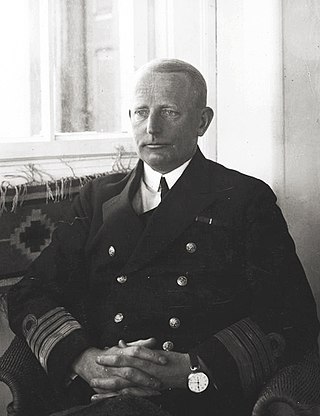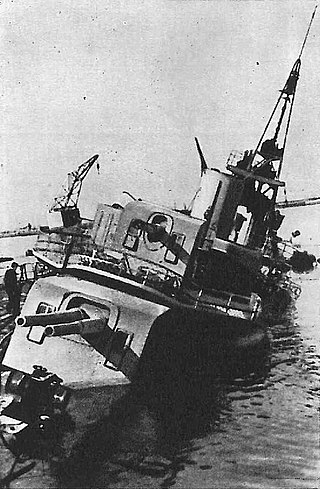
Gdańsk is a city on the Baltic coast of northern Poland, and the capital of the Pomeranian Voivodeship. With a population of 486,492, it is Poland's sixth-largest city and principal seaport. Gdańsk lies at the mouth of the Motława River and is situated at the southern edge of Gdańsk Bay, close to the city of Gdynia and resort town of Sopot; these form a metropolitan area called the Tricity (Trójmiasto), with a population of approximately 1.5 million.

Gdynia is a city in northern Poland and a seaport on the Baltic Sea coast. With an estimated population of 257 000, it is the 12th-largest city in Poland and the second-largest in the Pomeranian Voivodeship after Gdańsk. Gdynia is part of a conurbation with the spa town of Sopot, the city of Gdańsk, and suburban communities, which together form a metropolitan area called the Tricity (Trójmiasto) with around one million inhabitants.

Pomerania is a historical region on the southern shore of the Baltic Sea in Central Europe, split between Poland and Germany. The central and eastern part belongs to the West Pomeranian, Pomeranian and Kuyavian-Pomeranian voivodeships of Poland, while the western part belongs to the German states of Mecklenburg-Western Pomerania and Brandenburg.

Sopot is a seaside resort city in Pomerelia on the southern coast of the Baltic Sea in northern Poland, with a population of approximately 40,000. It is located in Pomerania Province and has the status of county – the smallest city in Poland to have that status. Sopot lies between the larger cities of Gdańsk to the southeast and Gdynia to the northwest. The three cities together form the Tricity metropolitan area.

ORP Błyskawica is a Grom-class destroyer which served in the Polish Navy during World War II. She is the only Polish Navy ship to have been decorated with the Virtuti Militari, Poland's highest military order for gallantry, and in 2012 was given the Pro Memoria Medal. Błyskawica is preserved as a museum ship in Gdynia and is the oldest preserved destroyer in the world. Błyskawica is moored next to the Dar Pomorza.

Hel is a seaside resort city in Puck County, Pomeranian Voivodeship, in northern Poland, located on the tip of the Hel Peninsula, some 33 kilometres from the Polish mainland.

Several nations observe or have observed a Navy Day to recognize their navy.

Józef Unrug was a Polish admiral who helped establish Poland's navy after World War I. During the opening stages of World War II, he served as the Polish Navy's commander-in-chief. As a German POW, he refused all German offers to change sides and was incarcerated in several Oflags, including Colditz Castle. He stayed in exile after the war in the United Kingdom, Morocco and France where he died and was buried. In September 2018 he was posthumously promoted in the rank of Admiral of the fleet by the President of Poland. After 45 years his remains, along with those of his wife Zofia, were exhumed from Montrésor and taken in October 2018 to his final resting place in Gdynia, Poland.

The Battle of Danzig Bay took place on 1 September 1939, at the beginning of the invasion of Poland, when Polish Navy warships were attacked by German Luftwaffe aircraft in Gdańsk Bay. It was the first naval-air battle of World War II.

The Battle of Hel was a World War II engagement fought from 1 September to 2 October 1939 on the Hel Peninsula, of the Baltic Sea coast, between invading German forces and defending Polish units during the German invasion of Poland. The defense of the Hel Peninsula took place around the Hel Fortified Area, a system of Polish fortifications that had been constructed in the 1930s near the interwar border with the German Third Reich.

Jerzy Włodzimierz Świrski was a Polish vice admiral and officer in the Russian Imperial Navy and later the Polish Navy. As Chief of the Polish Naval Command (1925-1947), he was a member of an elite group of high ranking Polish naval officers from foreign navies who became founder members of the re-established naval forces of the newly independent Poland after World War I. During World War II, Polish naval forces under his command, were embedded with the Royal Navy and contributed significantly to the success of Britain's maritime war effort. He notably fell out with Poland's war time Prime Minister-in-exile, General Sikorski, but was backed by the British and survived in post. He was appointed an Honorary Knight Commander of the Order of the Bath.

ORP Batory was a patrol boat of the Polish Border Guard which operated from the 1930s into the 1950s.

The Polish Navy is the naval branch of the Polish Armed Forces. The Polish Navy consists of 46 ships and about 12,000 commissioned and enlisted personnel. The traditional ship prefix in the Polish Navy is ORP.

The Polish Naval Academy (PNA) "Heroes of Westerplatte" is a naval university supervised by the Ministry of National Defence of the Republic of Poland, with the history, uninterrupted by World War II, dating back to 1922. At present the PNA provides education for officer-cadets, commissioned officers and civilian students at first and second cycles of study, as well as doctoral studies. It also offers opportunities for professional development at specialized courses and postgraduate programs. In accordance with international agreements the PNA trains officers for naval forces of countries in Europe, North Africa, the Middle and Far East. International exchange significantly contributes to the rise in qualifications of the PNA staff. It also allows the students to attend lectures given by best specialists from leading scientific centers of the world.

Bolesław Romanowski was a submarine commander of the Polish Navy during World War II.
Czesław Bartolik was a Polish football player and manager.

Adam Dedio was a Polish Home Army officer during World War II. He fought in the battle of Kock in 1939 and the Warsaw Uprising in 1944, He was a Polish Navy officer from 1945 to 1947, who was executed after a show trial in 1947.

Jan Radtke was a politician, who served as the mayor (sołtys) of Gdynia, and the mayor (wójt) of the municipality of Chylonia, from 1919 to 1926.

ORP Kujawiak was a Polish A 56 type torpedo boat, served from 1921 to 1939; formerly the German A 68 from World War I, one of the first ships of the Polish Navy. The vessel was acquired by the navy from the division of Imperial German Navy ships after the end of the war. Struggling with technical issues, the unit served as a training ship from 1929, and then as an auxiliary ship, and was removed from the fleet list shortly before the outbreak of the war. During the Invasion of Poland, it served as a floating reserve oil tank, was sunk by aircraft, and subsequently scrapped.

ORP Smok was a full-sea tugboat of the Polish Navy, built in 1922 in La Rochelle, France. It sailed under various owners in France and Belgium under the names Le Boxeur and Leopold. Purchased by Poland in 1932, it served as a tugboat, training ship, and auxiliary mine-laying ship. It underwent numerous reconstructions. During the September Campaign, it transported materials from Gdynia to Hel. To block the entrance to the port in Hel, it was scuttled. It was salvaged by the Germans and, after repairs, incorporated into service under the name Rixhöft. It sailed until 1945, when it sank due to an aerial naval mine.




















